“When he had said this, Jesus went out with his disciples across the Kidron valley to where there was a garden, into which he and his disciples entered.” (Jn: 18:1)
This is how the narrative of the Lord’s Passion begins, as read by the Church in the service of Good Friday.
John does not give us the name of the place to which Jesus and his disciples headed. He only tells us it was a garden. Matthew and Mark call it Gethsemane (Mt 26:1; Mk 14:32), and Luke specifies that it is located at the foot of the Mount of Olives (Lk 22:39). Because of this, Christian tradition has named the place of Jesus’s prayer both “Gethsemane” and the “Garden of Olives.” Excavations carried out by the Franciscans during construction of the new church of Gethsemane—also called the Church of All Nations—unearthed several remains of agricultural installations such as olive oil presses.
Saint John gives us some indication of the route Jesus followed to Gethsemane. Jesus and his disciples had to cross the Kidron Valley—which runs between the hill upon which Jerusalem is built and the Mount of Olives. To get there, there were several options for Jesus and his disciples.
One of them was to leave the Holy City through an eastern gate. It is probable that there was a gate at the base of the southeastern corner of the esplanade to the Temple Mount, where the city’s eastern wall met the wall which enclosed the Temple compound; that is, at the base of what later tradition referred to as the Temple’s pinnacle.
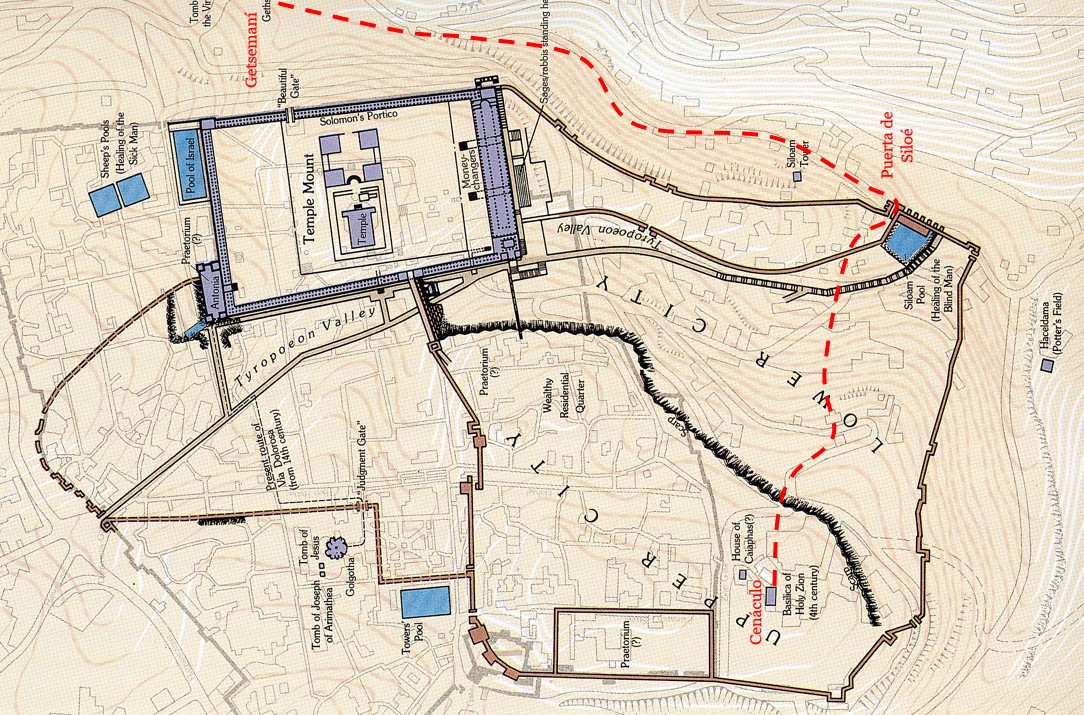
However, since it was already night (Jn 13:30) and most of the gates were probably closed, it is possible that the group went through the gate of the Pool of Siloam, which, being one of the city’s larger gates, remained open. A wide avenue leading the pilgrims to the foot of the Temple Mount’s esplanade started from this gate. The procession led by Jesus then had to descend one of the so-called stepped streets, which connected the upper part of the city, where the Upper Room is located, with the Siloam district in the lower city.
Within the confines of the Church of Saint Peter in Gallicantu, which commemorates Peter’s repentance after denying Christ three times, archaeologists uncovered a wide staircase that precisely descends towards the area of the Pool of Siloam. Did Jesus and his disciples walk on its steps? This is what some reliefs placed at the top of this “holy staircase” suggest.
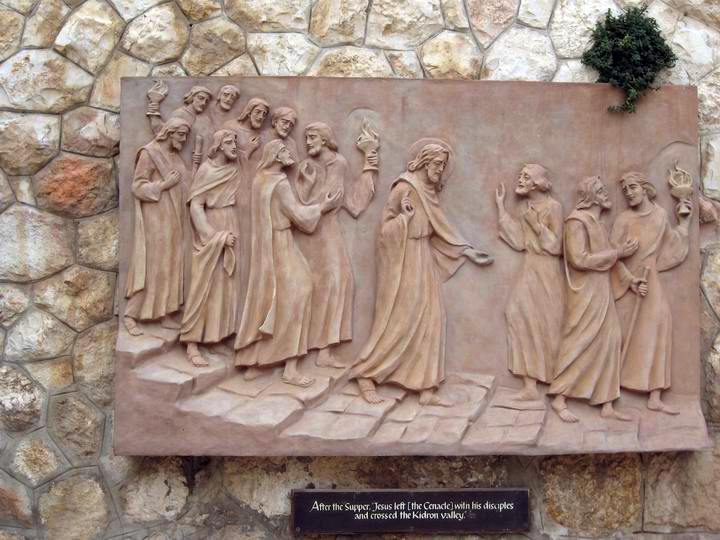
Jesus and the Disciples Heading Towards Gethsemane. Church of Saint Peter in Gallicantu, Jerusalem – Biblewalks
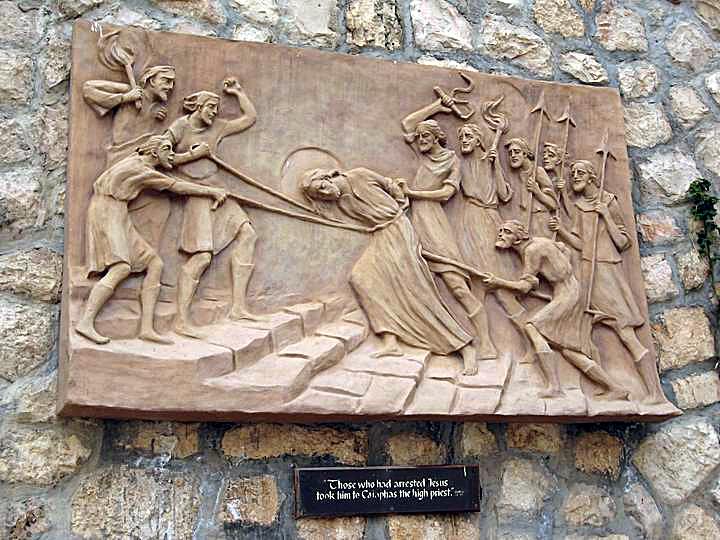
Jesus Shackled in Chains, while being taken to the House of the High Priest. Church of Saint Peter in Gallicantu, Jerusalem – Biblewalks
Upon exiting through the Siloam Gate, Jesus and his disciples went up the Kidron Valley. At this level, the stream carries no water since the Gihon Spring that feeds it is located further below. Then, as today, the eastern slope of the stream was covered with tombs and mausoleums. Two mausoleums stand out in particular: the first, entirely carved out of rock, is topped by an imposing pyramid. The second is covered with a conical structure that is very typical of Hellenistic architecture. Although both Christian and Jewish traditions respectively called them the tomb of the prophet Zechariah and the tomb of Absalom, son of David (2 Sam 18:18), these two monuments were more likely built by the priestly aristocracy of Jerusalem during the time of Jesus. Both buildings survived the destructive fury of the Romans and are the only witnesses of that night when Jesus walked by them with his disciples on the way to Gethsemane.
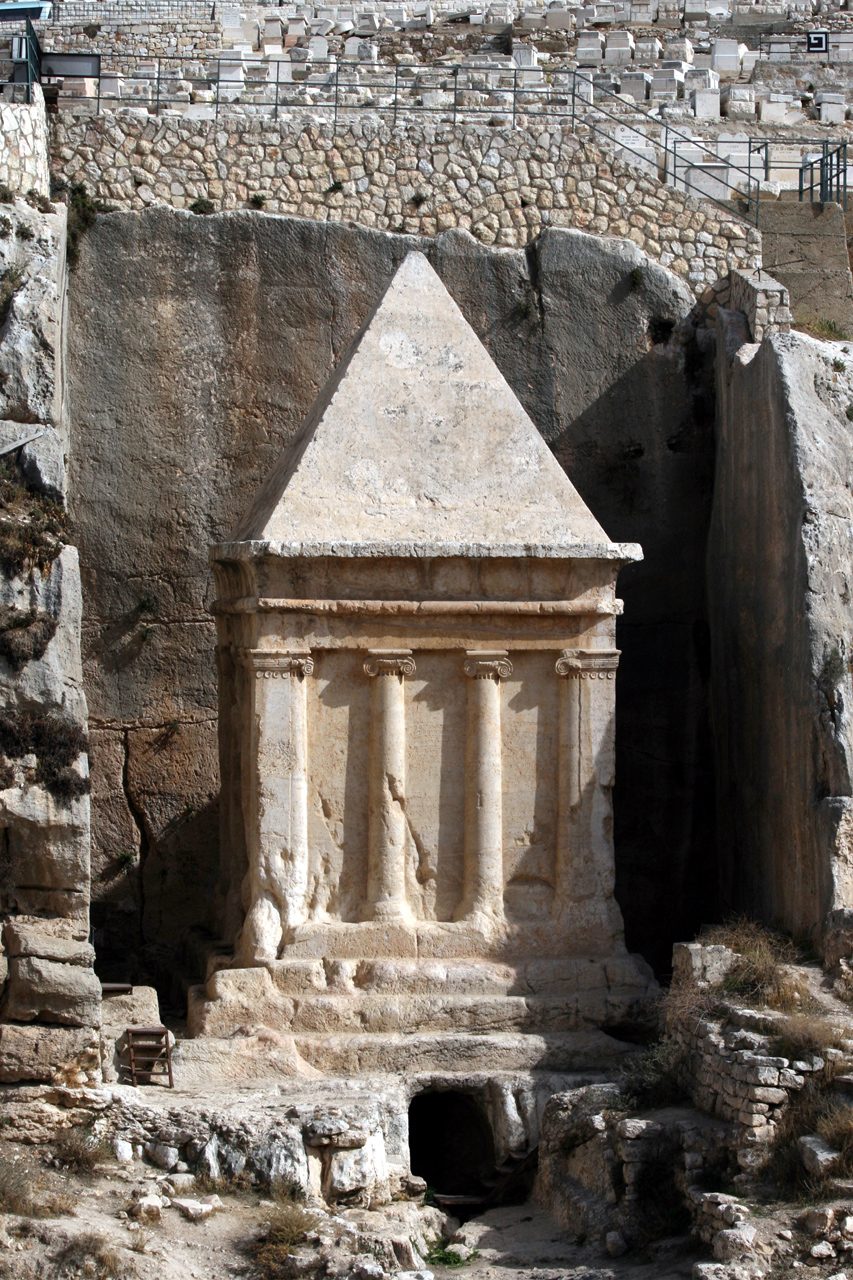
The Mausoleum of Zechariah in the Kidron Valley, photo Henri Gourinard
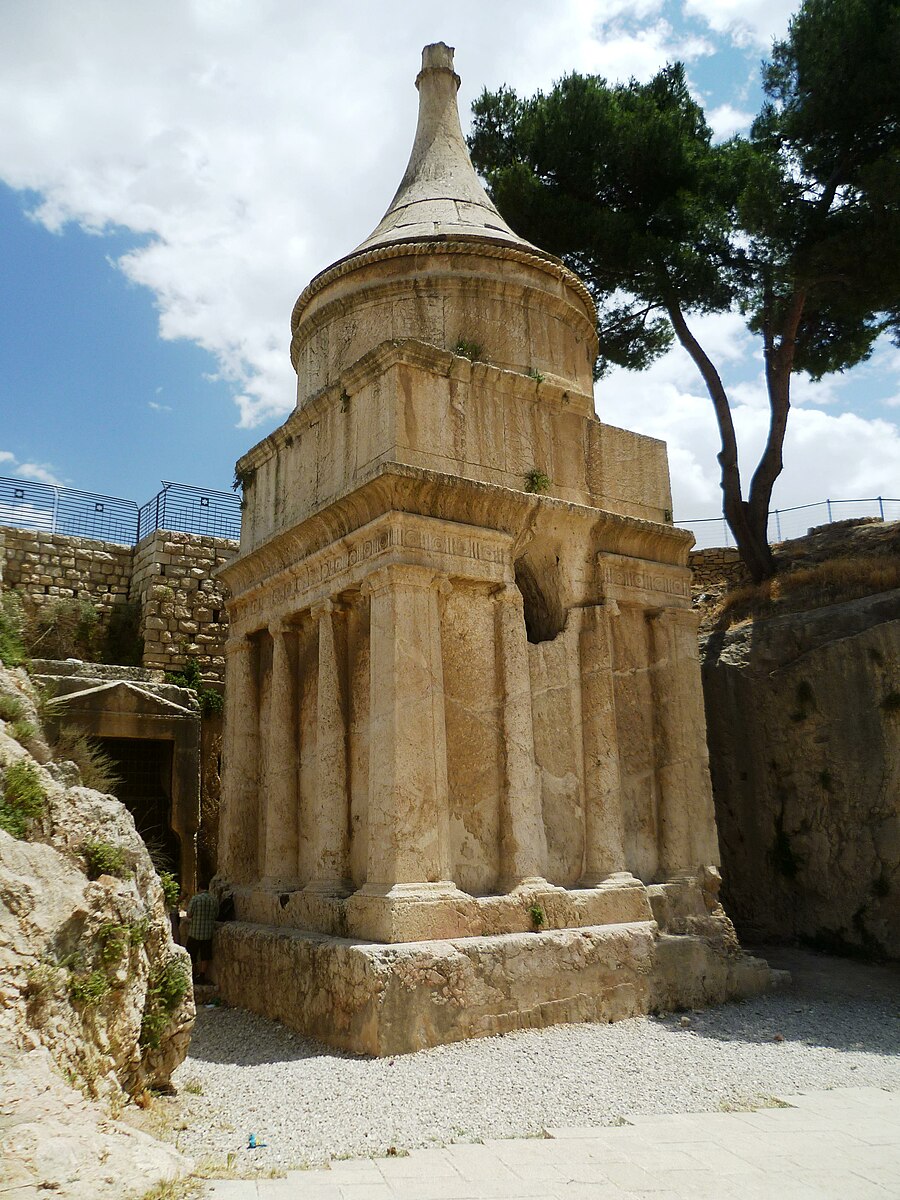
The Mausoleum of Absalom in the Kidron Valley, photo Henri Gourinard
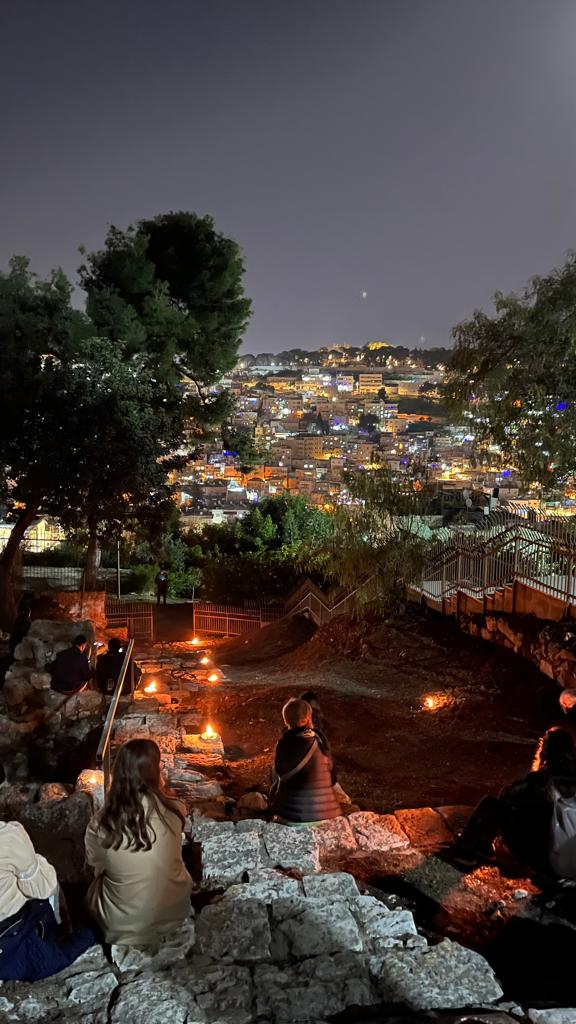
Holy Staircase of Saint Peter in Gallicantu, photo by Mari Linares, Holy Week 2023
Then, the group began to ascend the slope of the Mount of Olives, crossed the Jericho road, and arrived at the Garden of Olives. There, Jesus separated from the main group of his disciples, and took Peter, James, and John with him, asking them to keep watch, while he went a stone’s throw away to pray to his Father. At the end of his prayer, he returned with the three disciples towards the main group. At that moment, Judas arrived with the party to arrest Him and take Him to the house of Annas and from there to that of Caiaphas. The Lord took up the same path as earlier, but this time in the opposite direction.
Each year, in the evening of Holy Thursday, after a vigil of prayer in Gethsemane, a procession sets out towards the Church of Saint Peter in Gallicantu, located where, according to tradition, Jesus was judged. Many pilgrims and local Christians carry candles with them, to leave on that “holy staircase” which Jesus, shackled by chains, had to climb in order to reach the house of the High Priest.
By Henri Gourinard
